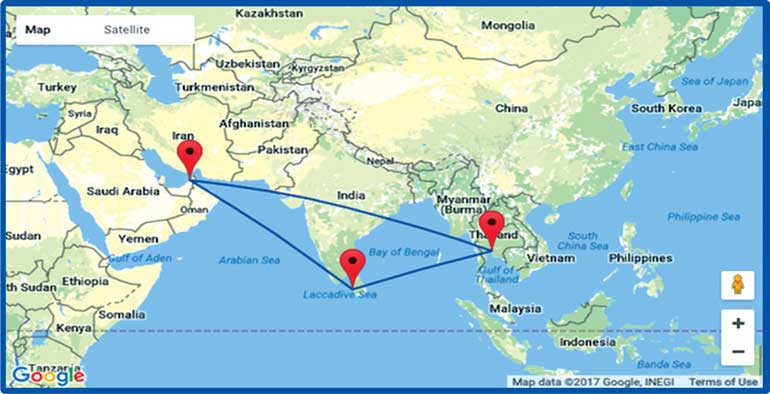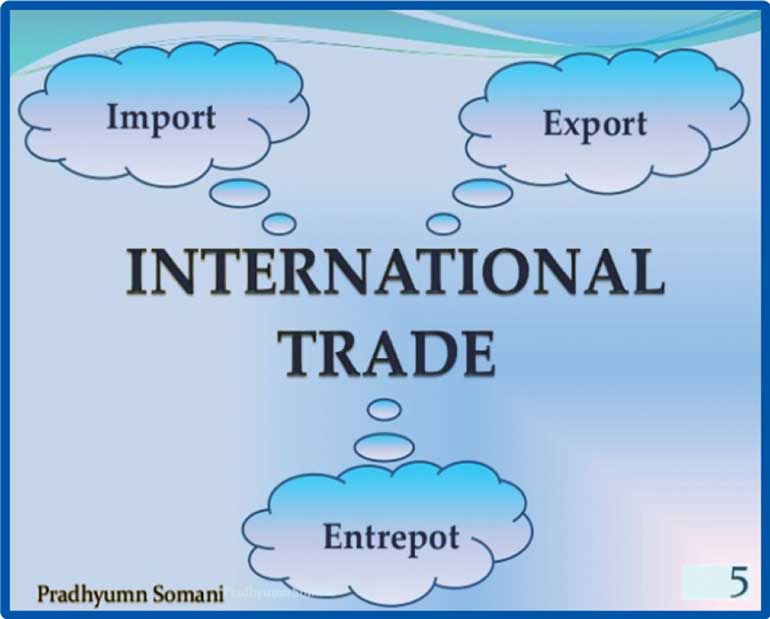Monday Jan 06, 2025
Monday Jan 06, 2025
Friday, 21 July 2017 00:00 - - {{hitsCtrl.values.hits}}


The EDB conducted a Forum on Entrepót Trade with the participation of a large number of traders/exporters and others engaged in the entrepót trade. Sri Lanka Logistics & Freight Forwarders’ Association (SLFFA), Sri Lanka Shippers’ Council (SLSC), Shippers Academy Colombo and several public sector institutions relevant to the trade including Sri Lanka Customs, Ports Authority and BOI collaborated with EDB in organising the Entrepót Traders’ Forum held at EDB Auditorium on 13 July.
This forum provided a platform for the traders/exporters engaged and interested in entrepót trade to understand current entrepót trade procedures in Sri Lanka and to discuss the issues that need to be addressed to develop the trade.
Entrepót trade or the re-export trade involves importing goods from one country and re-exporting to another, with or without any additional processing or repackaging. Goods are exempt from duties at the point of import and re-exports.
Commercial Hub Regulations were introduced initially in Part IV of the Finance Act No 12 of 2012 of Sri Lanka was amended by Finance Act No 12 of 2013, cited as the ‘Finance Act – Commercial Hub Regulations’ in the Gazette Notification No. 1818/30 of 11 July 2013. The introduction of these regulations created a distinction between the entrepót traders as follows:
a) Entrepót Trade under the Commercial Hub Regulations (Foreign Investors falling under the purview of the BOI)
b) Entrepót Trade under the Customs Ordinance without entitlements to all of the benefits under Commercial Hub Regulations (Local Traders)
Commercial Hub Regulations demarcated six areas in close proximity or within the ports and air ports as Free Ports or Bonded Areas (areas which are geographically inside Sri Lanka but are legally considered outside its customs territory and supervised by the Board of Investment of Sri Lanka or the Director General Customs or any other authority under the Commercial Hub Regulations) to facilitate trade. These are the Colombo Port, Hambantota Port, Mattala Airport, Katunayake EPZ, Koggala EPZ and Mirrijjawala EPZ. Though not under the Commercial Hub Regulations, the Colombo Airport Cargo Terminal is also a customs supervised bonded area.
Superintendent of Customs Thilak Arumapperuma Arachchi, Shippers’ Academy Colombo CEO Rohan Masakorala, Sri Lanka Logistics & Freight Forwarders’ Association (SLFFA) Past Chairman Dushmantha Karannagoda, BOI Acting Executive Director Mahinda Ramanayake, Sri Lanka Shippers’ Council Chairman Chrisso De Mel, Export Development Board Director General Jeevani Siriwardena, among others, graced this occasion.
Thilak Arumapperuma Arachchi confirmed that import of goods and re-export to a third country with value addition no fiscal levies. He continued by informing what are the challenges faced by entrepót trade.
Mahinda Ramanayake speaking at the forum said that the Government has announced to setup free ports and bonded areas to create trade related infrastructure to facilitate import and export of goods and services with freedom to carry out transactions in convertible foreign currency.
Dushmantha Karannagoda pointed out several facts: Customs documentation process, locations for entrepót handling, entrepót trade activities, registration process to handle entrepót activity, prohibited items under entrepót trade and exchange control provisions governing entrepót trade, etc. Further, he stated that the bottlenecks and red tapes need to be ironed out before we start promoting entrepót activity. Bad experiences could divert the traffic and winning them back would be an uphill task.
According to Rohan Masakorala, Sri Lanka’s location in the international maritime map has put it at a better advantage to be a major player in this field than it is for the leaders in entrepót trade such as Dubai and Singapore.
Jeevani Siriwardena said that the EDB has identified the necessity of the entrepót trade and successfully conducted four roundtable meetings with the entrepót stakeholders to identify ways to develop the trade. Further she said that in it, the current entrepót rules and regulations have been reviewed to make it conducive to entrepót trade.
There was a session where participants put forward issues that they are currently facing when carrying out entrepót exports. The 1st Entrepót trade Forum was a great opportunity for entrepót traders/exporters entering the global market. In his concluding remarks, Director Export Services of EDB said that the EDB will continue these discussions with the industry to identify and solve the issues confronted by them and to obtain their views on developing the trade.
Globally, the top three entrepóts, (excluding the USA), consisting of Hong Kong, Singapore and Dubai have contributed 161%, 83 % and 26% from re-exports to their GDP respectively in 2015. Hong Kong, the world’s largest re-exporter, serves as the conduit to the Chinese mainland, facilitating much of the mainland’s trade, taking advantage of its location and an investor friendly tax regime for entrepót trade. Its main market segment is mainland China. Singapore serves as an entrepót mainly for goods destined to regional markets such as Hong Kong, China, Malaysia, Indonesia, Korea, Taiwan and Japan apart from the USA and the EU.
Dubai, emerging from a barren desert, is positioned as the gateway to the Middle East and also re-exports goods to many other countries including China, India Saudi Arabia, Germany and the US. These three entrepóts combined commanded 75% of the global market in 2014 as per ITC statistics, with Hong Kong dominating the landscape with 44% of the global market share. Singapore, the second largest re-exporter lagged behind Hong Kong with 21% and UAE with 10% of market share respectively. Commodities popularly re-exported are machinery and equipment from Hong Kong and Singapore and pearls, precious stones and metals from Dubai.
These global giants are high income countries and characterised by political stability, high investments in superior infrastructure and warehousing facilities, high labour and utility costs, low taxes and duties, streamed lined procedures and focused policies to take advantage of their location in the geographical map. The ports and airports of the countries are amongst the busiest in the world. Logistics are mostly outsourced to private operators leading to operational efficiencies.
In 2016 Sri Lanka re-exported to 32 countries around the world. UAE (24%), India (23%), China (11%) and Singapore (11%) accounted for the majority share of 69% of the total FOB Value. Similarly, 63% of the CIF value of imports classified under entrepót were from four nations, namely China (25%), Canada (17%), UAE (11%) and the Netherlands (10%). Interestingly Sri Lanka’s entrepót trading partners seem to be the giant nations in the world via the top entrepóts.
In terms of products, 15 items accounted for over 80% of the import and export value in 2016 out of over 230 items traded. These mainly consisted of Lentils, Lead Acid batteries, Confectionary, Liquor, Cigarettes and Baby Products. Approximately 75% of the cargo arrives into the country as ocean freight whilst only 65% of the outgoing cargo is re-exported as ocean freight. This indicates that a portion (approximately 10%) of the processed or consolidated cargo is sent out on air freight possibly to fulfil urgent requirements.
Sri Lanka possesses many, if not more comparative and competitive advantages relative to the global players, for development of this trade. The current political and economic milieu and positive investor sentiment have prompted the government to introduce many measures to develop the entrepót trade. In this process, to harness fully the potential of the geographical positioning of the island in the East-West maritime route, the Government initiated several steps to promote Sri Lanka as a commercial hub.